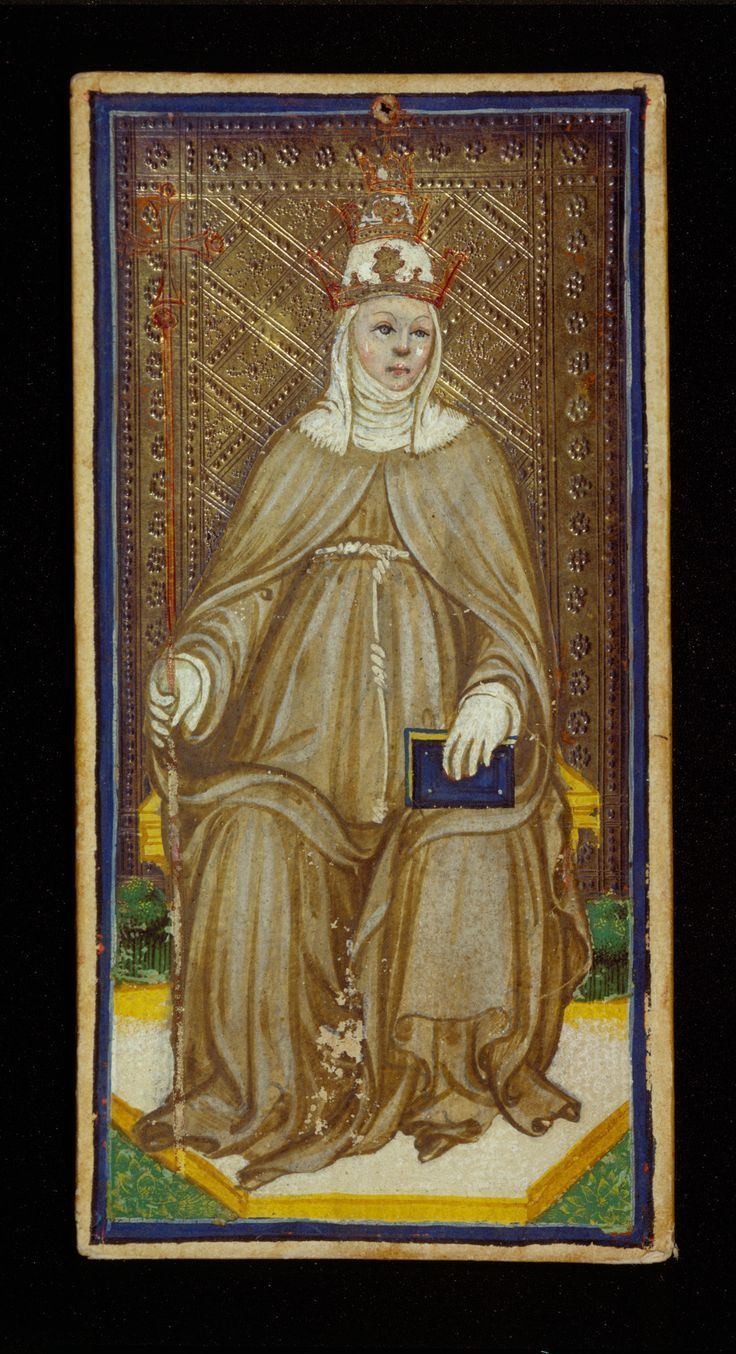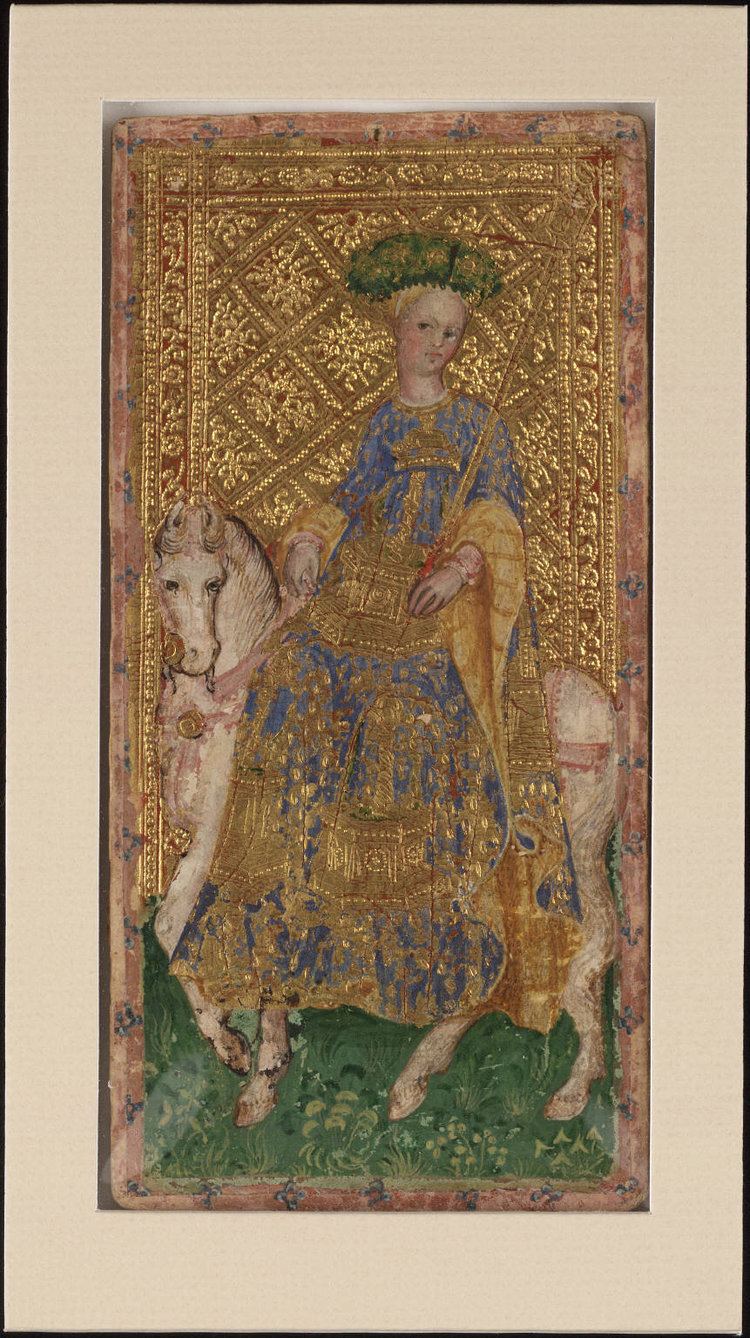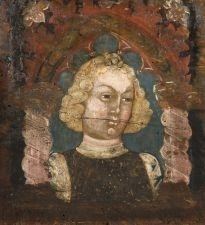Name Bonifacio Bembo Role Painter | Died 1477 Period Italian Renaissance | |
 | ||
Similar People Bianca Maria Visconti, Francesco I Sforza, Galeazzo Maria Sforza, Muzio Sforza, Ippolita Maria Sforza | ||
Bonifacio Bembo, also called Bonfazio Bembo, or simply just Bembo, was a north Italian Renaissance artist born in Brescia in 1420. He was the son of Giovanni Bembo, an active painter during his time. As a painter, Bonifacio mainly worked in Cremona. He was patronized by the Sforza family and was commissioned to paint portraits of Francesco Sforza and his wife Bianca Maria Sforza. He is also attributed with producing a tarot card deck for the Visconti-Sforza families. In the past century; however, art historians have begun to question the authenticity of his works believing his only two secure works to be the portraits of Francesco and Bianca Maria Sforza. He is believed to have died sometime before 1482.
Contents
- Biography
- Works
- Cavalcabo Chapel
- Sforza Patronage
- Sforza Portraits
- Later Works
- Authorship in Doubt
- Tarot Cards
- References

Biography

Bonifacio Bembo was born in Brescia, Italy in 1420 to an Italian family of painters. He was the son of Giovanni Bembo, a painter active in Cremona from 1425-1449. His brothers Benedetto and Andrea were also painters active in Cremona. Bonifacio also had a nephew named Giovanni Francesco Bembo who became a painter. In all, there are thought to be 9 artists with the last name Bembo who were active in Cremona from 1425 until the early 1600s. Based on letters written by Bembo, he claimed to be a supporter of the Francesco Sforza in 1447 following the death of Filippo Maria Visconti, the Duke of Milan. Sforza eventually became Duke of Milan in 1450 and because of the support Bembo had shown him a few years prior, commissioned him to many works. On April 23, 1474, Galeazzo Sforza, the Duke of Milan, granted Bembo and his descendants Milanese citizenship. The patronage of the Sforza family continued until 1477 when Bembo seems to disappear from the historical record.
Works

Bonifacio was active between 1447 and 1478. He painted portraits, frescoes, biblical scenes, and also designed tarot cards. He is known for the frescoes found in the ducal chapel of the Castello Sforzesco in Milan. He also painted portraits of Francesco Sforza and his wife Bianca Maria Visconti. These portraits hang in the church of Saint Agostino in Cremona.
Cavalcabo Chapel

His earliest attributed work is the Cavalcabo chapel in San Agostino, Cremona. Giovanni Cavalcabo paid for the decoration of the chapel in 1447 and it took approximately five years to complete. Strangely, there is no connection between Bembo and the chapel; however, following the publication of Wittgen in 1936, the chapel has been attributed to him. While painting the decorations of the chapel, Bembo showed fine style demonstrating the influence of Michelino da Besozzo and the Zavattari brothers. The frescoes in the chapel depict Evangelists and the coronation of Christ and the Virgin. Bright colors illuminate the frescoes while all of the figures are drawn using thin, curving lines.
Sforza Patronage

He painted an altarpiece commemorating the wedding day, October 25, of Bianca and Francesco Sforza for their chapel in San Agostino, Cremona in 1462. Yet he had still not been paid for the altarpiece by 1469. Bembo also painted the altarpiece of Cremona Cathedral in 1467.

Upon the succession of Galeazzo Maria Sforza in 1466, Bembo's work for the Sforza family increased. In 1468 the Sforzas sent him to Pavia where he worked for three years. While there, he painted secular decorations depicting the Duke and Duchess hunting and dining. In the summer of 1472 he began to work on a votive chapel of St Mary outside Vigevano with Leonard Ponzoni at the behest of Galeazzo Sforza.
Sforza Portraits
In 1460, Bembo was commissioned by Francesco Sforza to paint a portrait of he and his wife. The portraits originally hung on pillars outside of the chapel of SS Daria and Grisante in S Agostino, Cremona. They were then transferred onto canvas and moved inside the chapel itself where they both hang today. The well-preserved and detailed head of Francesco Sforza demonstrates that Bembo was a competent portrait painter. The details of Francesco's mole on his cheek, his chin folds, and his pursed lips were all captured with shadowy lines and demonstrate the competence of Bembo as an artist.
Later Works
In 1473 he began directing the work to be done in the ducal chapel in the Castello Sforzesco. Only a few of the frescoes in the ducal chapel still survive today. It is difficult to determine the precise role Bembo played in the decoration of the chapel because he worked alongside several other artists, which would become a theme in his later life. In 1474 he worked on a chapel in the church of Santa Maria da Caravaggio alongside Giacomino Vincemala. He also worked closely with other associates on the polyptych in Pavia where he worked with Vincenzo Foppa and Zanetto Bugatto. In 1476 he made a large cycle of 21 episodes from the Life of Christ for the church of San Giacomo fuori in Pavia, working with Foppa and Bugatto. In 1476 he painted frescoes of The Procession of the Magi and the Annunciation in the Collegio Castiglione Chapel, Pavia. His work for the Sforza court officially came to an end following the assassination of Galeazzo Sforza in 1477. He is also well known for his painting Jesus among the Doctors which hangs in the Pitti Palace in Florence.
Authorship in Doubt
Art historians believe his style improved over the years as he learned how to accurately represent space. Despite having a considerable number of works attributed to him, only the portraits of the Sforza family are surely his. There has been much debate over the authenticity of his works due to some of his earlier works being dissimilar from one another, as if they were done by different people. It is hard to assess the breadth of his work because of the predominance of the Bembo name in the region. In addition, given that Bonifacio only has two secured works, it is nearly impossible to determine his style with such a small sample size. Further investigation is needed before any conclusive claims can be made about the authenticity of his works. Many of his attributed works can be found in museums and galleries in Italy. His Coronation of the Virgin can be found in Cremona while his Drawings Illustrating the Story of Lancelot can be found in the library of Florence.
Tarot Cards
One of Bonifacio's best known works is the pack of tarocchi cards he painted for Bianca Visconti Sforza in the mid fifteenth century. Tarot cards began to appear in the mid fifteenth century, making Bembo one of the first artists to paint a deck of them. Bianca Sforza chose to have Bembo paint the cards because he was her favorite painter. In all, Bembo painted seventy-two cards of the full deck of seventy-eight. The modelling of the cherubs on the remaining six cards is different from Bembo's style and they are believed to have been painted by Antonio Cicognara to replace cards that had been lost from the original set. Of these seventy-eight, four have been lost over the course of history. The four that have been lost are the Devil, the Tower, the Knight of Coins, and the Three of Swords. The deck was composed of four main suits known as the Swords, Cups, Coins, and Staves. In addition the deck had a fifth mysterious suit of twenty-one trumps and a wild card known as the Fool. Bembo hand painted each individual card with skill, managing to incorporate the Visconti motto into many cards of the four main suits. On the fifth suit he managed to add Sforza devices. The deck is thought to have been painted in 1450, the year that Count Sforza adopted the three-ring device found on the Emperor and Empress cards. Each card was painted and illuminated on heavy cardboard and measures 175 by 87 millimeters.
Given their beauty and elegance, the cards were very rarely played with, if at all, by the Sforza family based on the relative wear and tear on the cards compared to other decks the family owned. Even today the beauty of the cards has an impact on people. Italo Calvino wrote a novel titled The castle of crossed destinies based on the deck of cards Bembo created. Today, the cards can be found in different places as the set has been broken up throughout the years. The Morgan Library and Museum acquired 35 of the cards in 1911 and they have remained there ever since. At the JP Morgan Library the cards are kept in transparent envelopes so they may be examined without handling them. They are also held in a fourteenth century French casket-box decorated in relief with chivalric scenes. Thirteen cards are owned by the Colleoni family who inherited them from the Sforza family. Finally, the Accademia Carrara in Bergamo owns the other 26 cards with the final four cards having been lost.
